Koh Haa
Koh Lanta National Park is one of the jewels of the Andaman Sea.
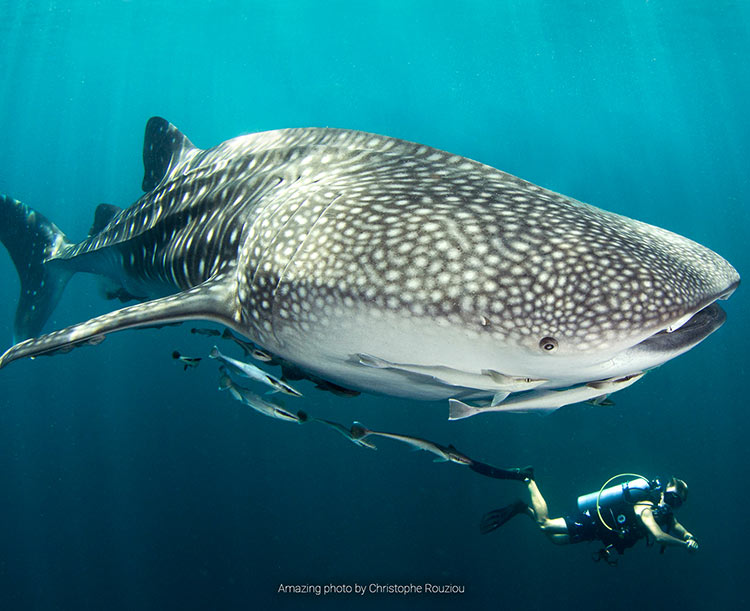
Koh Haa
Nestled within the Koh Lanta National Park is one of the jewels of the Andaman Sea. It is a collection of six islands – Koh Haa Yai and its five smaller islands.
During the journey out on our speedboat, look out for dolphins which are regularly seen here, and even the occasional whale.
As you approach the islands, your eye will be drawn away from the incredible limestone karst islands rising magnificently from the ocean, and you’ll start to notice the deep blue of the sea change to the beautiful azure hue of the lagoon.

The lagoon is an excellent place for snorkeling as it is only about 6 meters deep with a mass of different varieties of soft and hard corals. On the west side of the lagoon is a fine white-powdered sandy beach where you can laze away the time between diving or snorkeling.
There are nine different dive sites at Koh Haa, and it really does offer something for everyone – whether it’s your first time underwater or you’re a well-practised veteran, the underwater scenery truly is incredible. The deeper waters are visited by passing whale sharks and rays, whilst the reefs are a haven for macro-lovers. However, the areas big draw is its caves, swim-throughs and chimney, which are great fun to explore whatever your qualification level.
This is the largest of the islands at Koh Haa. The area is officially named Koh Haa Yai after this island to differentiate the area from another just to the north with a very similar name. The island’s, indeed the areas, a big draw is found here – “The Cathedral”. There are three small caves found along the south wall, two of which are connected at sea level. Divers are able to surface in these two caves to find an impressive space within the island. The only available natural light emanates from under the water, creating an eerie glow in which to observe the stalactites hanging from the high ceiling. It is one of these stalactites, colored differently from the others, which resembles an organ, and along with the incredible acoustics, gives the cathedral its name. The other cave is smaller and darker and travels a little further into the island. The view from inside this cave is exhilarating, and makes for a fantastic photo opportunity. As well as the caves, there are many swim-throughs – ideal for testing your buoyancy skills! Either side of the caves you will find the reef becomes less and less steep. Turning left from the caves takes you along the reef slopes towards the island’s beach where snorkeling is excellent. Keep your eyes open as you travel along the reef for green and hawksbill turtles, great barracuda, and large potato groupers. This is also a great place to look for nudibranchs, ghost pipefish, and several species of colorful shrimp. Turning right from the caves takes you towards an area known as “The Secret Garden” – an area with beautifully formed corals and an abundance of reef life. Black-tip reef sharks and Kuhl’s stingrays are found swimming along the edge of the reef. Sightings of larger rays have also been spotted here as this reef forms the outside of the island group. · Depth: 5m – 30m. · Visibility: Between 10m – 30m. · Current: Moderate. · Level: Suitable for all diving levels. · Snorkeling: Yes and so good.
Koh Haa Yai
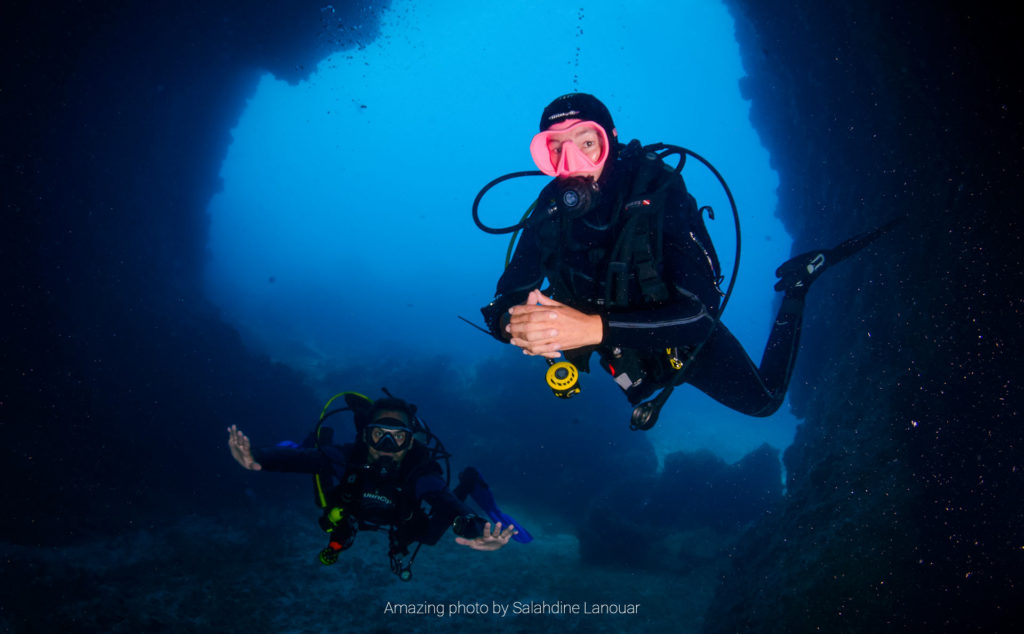
Conditions
Upon approach to Koh Haa, the lagoon stands out, as the blue sea lightens to an azure shade. Three of the areas six islands encircle the lagoon, making it a safe environment, especially for snorkelers. A small, fine white-sand beach found on the west side of the lagoon can be used for relaxing between snorkeling or diving. The water within the lagoon reaches a depth of 5-6 meters and has patch and rocky coral extending from the sea-floor to within a meter of the surface in places. Not only does this make for excellent snorkeling, but a good area for training and a great place for a safety stop at the end of a dive. At the edges of the lagoon, the sandy seabed slopes down and out into deeper water. On these slopes, you may find sea moths, flounder, pipefish, and devil scorpionfish. Reef fish are abundant – parrotfish, angelfish, butterflyfish, triggerfish, wrasse, and moorish idols are all seen going about their daily business. Moray eels are often seen free-swimming amongst the coral. · Depth: 0m – 5m. · Visibility: Between 10m – 30m. · Current: Low. · Level: Suitable for all diving levels. · Snorkeling: Yes, one of the best spots.
Koh Haa Lagoon
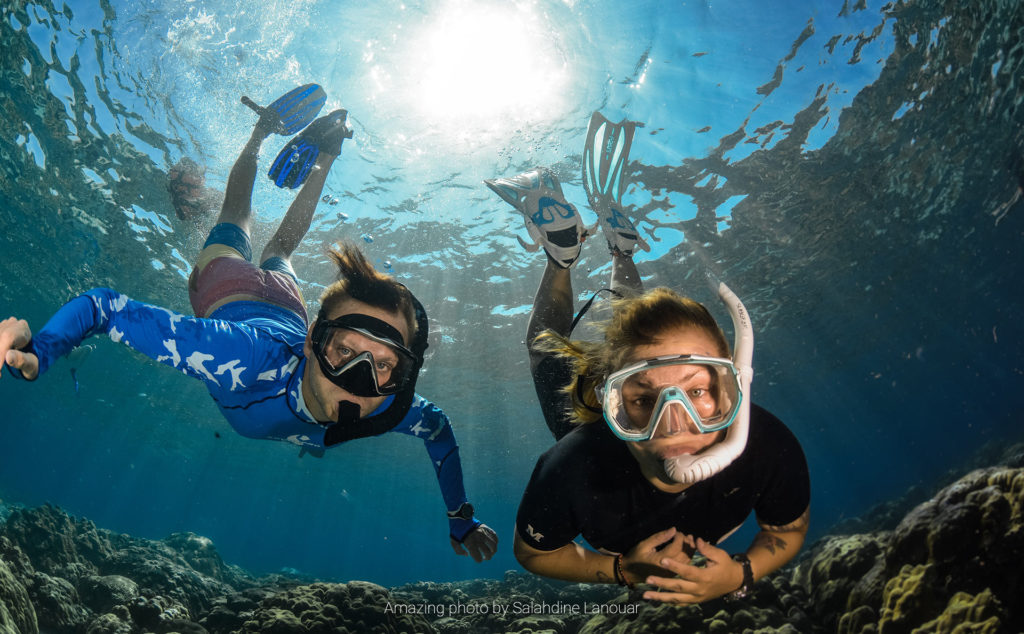
Conditions
There are two sites on this island, one on the north side and one on the south. They both, however, usually will include an exhilarating ascent through “The Chimney” – an incredible passageway through the reef. The entrance to the chimney is at 18m, and the exit is at 4-5m. If conditions allow, a connecting tunnel within the chimney at 8-9m takes you into a fish-bowl-like cavern. The north and south sides of the island have sloping reefs, whilst the east and west sides are vertical walls. Whilst the top part of the reef has plenty to keep divers interested, there are a multitude of exciting swim-throughs below 18m on the south side. The depth on this part of the island is ideal for divers with, or training towards, a PADI Advanced Open Water certification. As well as the customary reef fish, you may also find turtles eating the abundant bubble coral, golden trevallies hunting large schools of snapper, and many varieties of moray eel free-swimming through the multi-layers of plate coral. · Depth: 5m – 27m. · Visibility: Between 10m – 30m. · Current: Moderate. · Level: Suitable for all diving levels. · Snorkeling: No.
Koh Haa 1
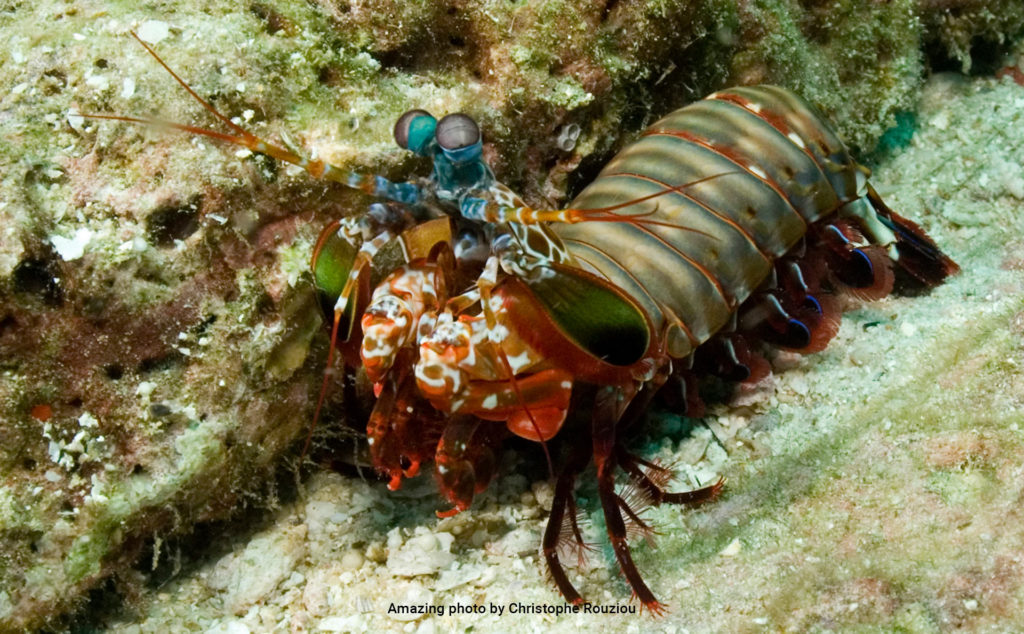
Conditions
One of the smaller islands in the group, Koh Haa 2 is one of the limestone outcrops bordering the beautiful lagoon. It has a shallow reef facing the lagoon that is ideal for snorkeling, and a stunning wall on the seaward side packed with marine life. There are several small cracks and crevices to explore here also. For its small size, the reef here is one of the most diverse in the area. Off the reef, you will find a huge school of chevron barracuda, large reef squid, and turtles searching for their favorite bubble coral. On the reef you will find ghost pipefish, frogfish, stonefish, nudibranchs, and many varieties of colorful shrimp, including harlequin and peacock mantis. This island is usually dived with Koh Haa 4 in the same dive due to its size and proximity. However, if you want to take your time to look really closely, or take photos, then a full dive can easily be devoted here. · Depth: 5m – 30m. · Visibility: Between 10m – 30m. · Current: Moderate. · Level: Suitable for all diving levels. · Snorkeling: Yes.
Koh Haa 2
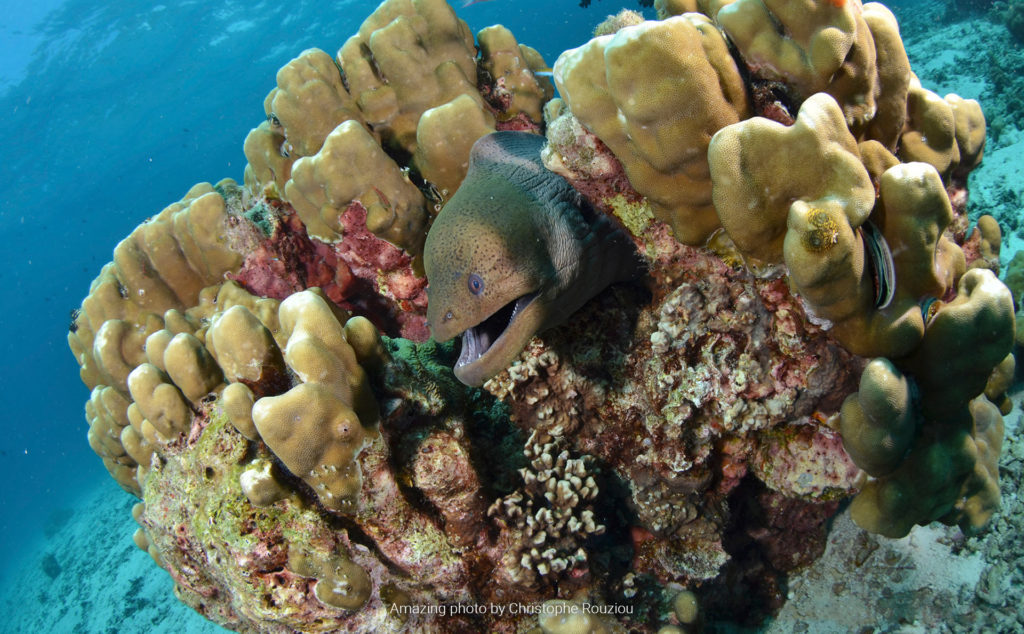
Conditions
This is the second-largest island at Koh Haa. The lagoon and a small, soft white-sand beach are found on its east side, whilst the west side has a sloping reef exposed to the open sea. Hence, snorkeling is the main activity on the east side, and diving to the west. The north and south tips of the island have steeper drop-offs that are covered in both soft and hard corals. There is a large rock covered in coral towards the southern end of the west side which is a great place to find nudibranchs. Whilst diving on the west side, keep a lookout into the blue as whale sharks and devil rays can be spotted here. You will also see large numbers of golden trevallies, along with sizeable great barracuda, hunting the schools of snapper. There is also a group of small black-tip reef sharks towards the northern end of the island, but it is normally the snorkellers that see these as they are very timid and the diver’s bubbles scare them off. Banded sea kraits, moray eels, and scorpionfish are seen more regularly on the west slope than other close-by locations. Sea whips are abundant at the northerly end. · Depth: 5m – 25m. · Visibility: Between 10m – 30m. · Current: Low to Moderate. · Level: Suitable for all diving levels. · Snorkeling: Yes and so popular.
Koh Haa 3

Conditions
This is the smallest of the islands bordering the crystal clear waters of the lagoon. On the lagoon side, the reef is shallow and gently shelving, perfect for snorkeling. On the sea-facing side of the island, the reef forms a steep wall. At the foot of the wall is an overhang where you will find some really interesting large rock boulders, covered in soft and hard corals. There are a couple of small caves and plenty of fractures in the limestone where you may find all sorts of macro-life. You will find a huge variety of fish here including great barracuda, a group of lionfish, a huge school of yellow snapper, and many well-camouflaged scorpionfish. At the foot of the reef live two garden eels, which are great fun to watch. There are also many different species of nudibranchs, pipefish, and shrimps. This dive site is usually dived along with Koh Haa 2 in the same dive due to their small size and close proximity. · Depth: 5m – 30m. · Visibility: Between 10m – 30m. · Current: Moderate. · Level: Suitable for all diving levels. · Snorkeling: Yes.
Koh Haa 4
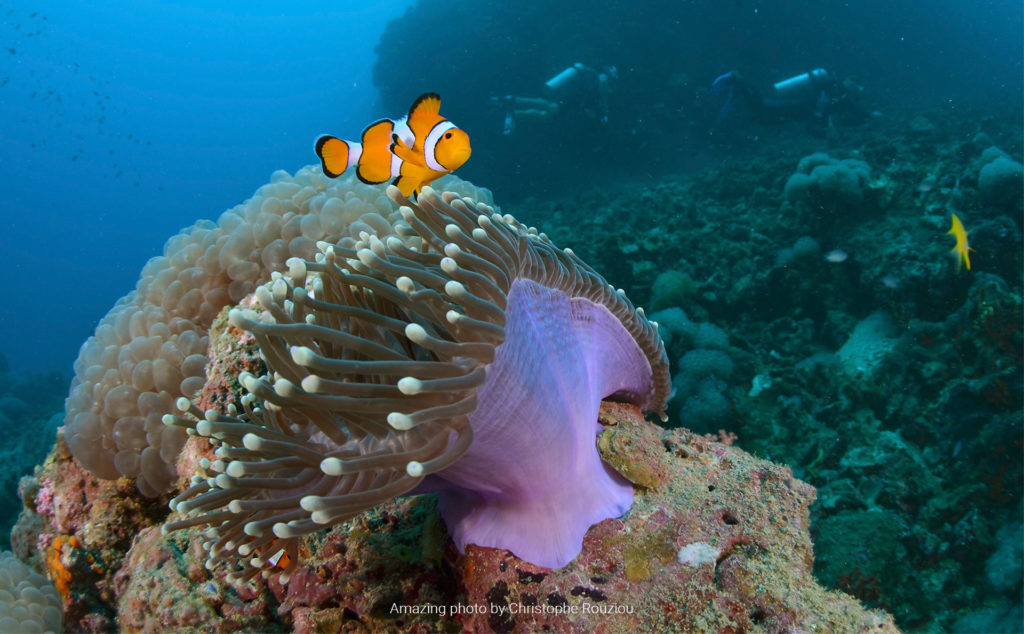
Conditions
Located just off the northern tip of Koh Haa Yai, this is the smallest of the Koh Haa group and is more of a large rock than an island. It rises from the sea-floor like a pyramid, and is easy to circumnavigate at least once during a dive. There are many cracks in the rock formation, great for spotting macro-life. A ridge connects Koh Haa 6 to Koh Haa Yai at 12m, and this reef is known locally as “The Secret Garden”. You will find an abundance of colorful soft and hard corals here, and reef fish are prolific. Koh Haa 6 is the place where more sightings of whale sharks are recorded than anywhere else in the local Koh Lanta area. Large rays are also seen here. On the reef, you will find ghost pipefish hidden behind sea urchins, and glassfish cascading down the corals like a waterfall. Some of the larger predators like golden trevallies, dogfin tuna and rainbow runners hang out in the blue watching for their chance to feed. · Depth: 5m – 28m. · Visibility: Between 10m – 30m. · Current: Moderate. · Level: Suitable for all diving levels. · Snorkeling: Yes.
Koh Haa 6
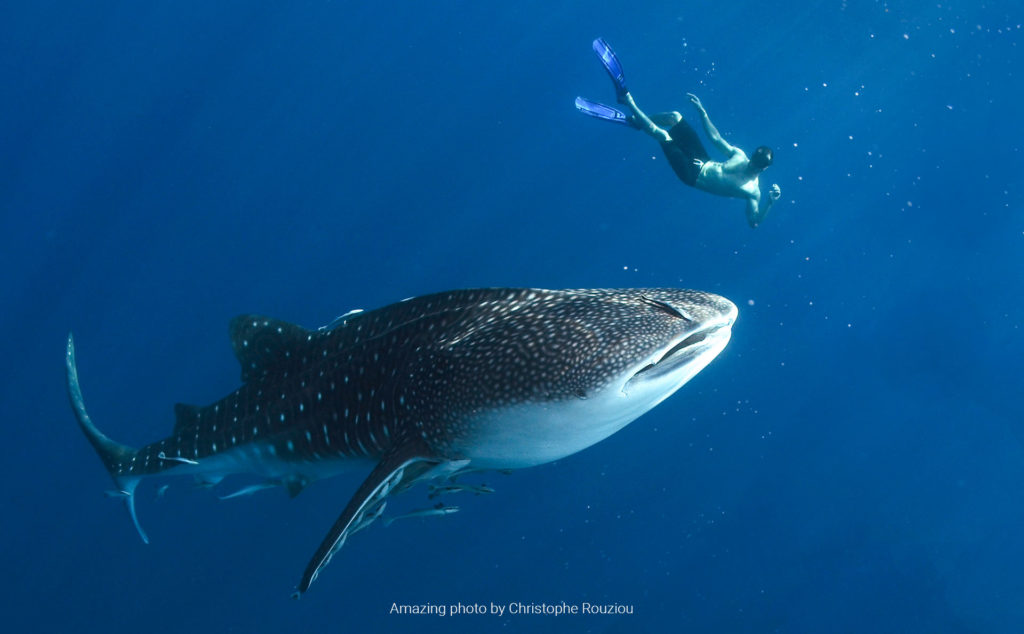
Conditions
Other Dive Sites

The Bida´s
Sharks day!
Koh Bida Nok, Koh Bida Nai, and Hin Bida are the home of a lot of relatively big blacktip reef sharks. Leopard sharks, other of our jewels, are seen on most dives at Hin Bida.
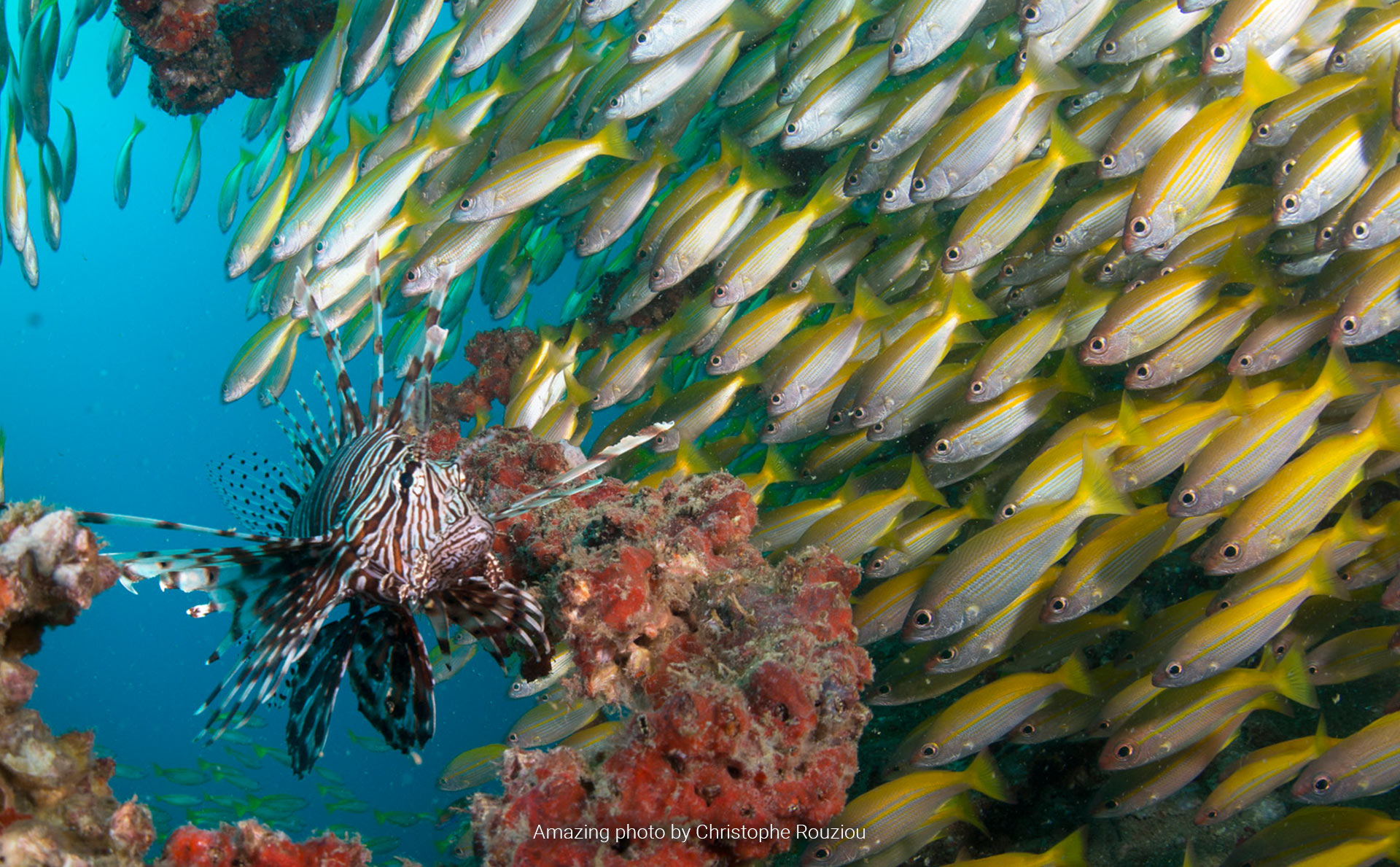
Koh Phi Phi
Wreck, reefs and amazing views
Phi Phi Lei and the outstanding Maya Bay are famous as the setting for the film The Beach. Be ready for a trip around some of the most stunning scenery above and below the sea.

Hin Daeng/Muang
Mantas & Whalesharks!
World-famous diving spots Hin Daeng and Hin Muang are home to huge oceanic mantas, whale sharks and many other species of marine life. A “must” for experienced divers.

Other Dive Sites
Not enough dive sites yet?
For those who always want more, here you have some other proposal very interesting; Another wreck and the famous Shark Point and Anemone Reef.



